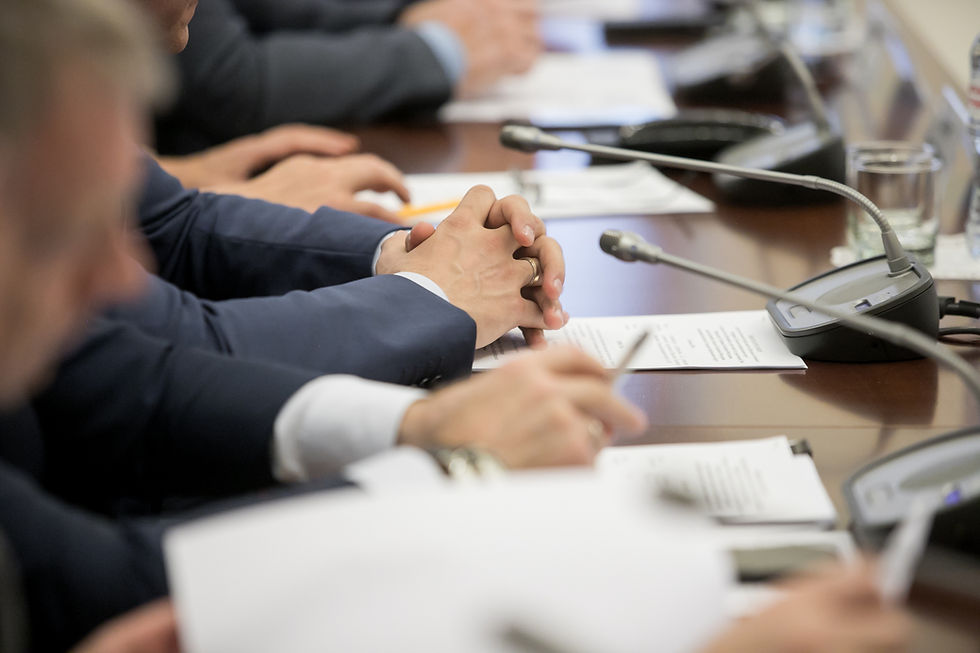The Dangers of Modern Fishing Gear
- Seaside IT
- May 9, 2023
- 4 min read
By: Joshita Richard

Media from Wix
One of the main problems with commercial fishing today is overexploitation and large amounts of bycatch from unsustainable fishing practices. The World Wildlife Fund estimates that 40 percent of annual marine catch is bycatch; unwanted species caught while fishing for a different target species. Common fishing techniques are usually the issue for excessive amounts of bycatch, performing so efficiently that they threaten fish stock as well as other marine animals such as turtles, dolphins, and sea birds.
Aside from some advancements, the basic way of catching fish has generally stayed the same for centuries due to the simple effectiveness of fishing methods. The most popular techniques include: hooked lines, stationary nets, and dragged nets (Levinton et al. p. 473). One of the most harmful types of hooked line fishing techniques includes longline fishing, which uses a very long fishing line with smaller lines that branch off of it, with baited hooks attached. This line is dragged behind boats, and the average U.S. longline set is 28 miles in length. This type of line is often used to catch tuna, halibut, and swordfish. In the Northern Pacific, longlines cast in high productivity zones often catch sea turtles and albatross along with the target fish species (Levinton et al. p. 474). Another common fishing method is trawling, where nets are dragged across the seafloor by boat to catch species such as shrimp, rockfish, and flounder. This method also disturbs and damages the seafloor by upsetting coral reefs, seagrass beds, and other places of shelter for marine life. Gillnets are another fishing method that produces lots of bycatch. These are walls of netting that expand 50 to 200 meters in length. Mesh in these nets is constructed to be just big enough for fish to get their heads stuck in them so that when they try to escape, their gills get caught.
Besides the excessive amount of bycatch these fishing methods can result in, they also are extremely harmful pollutants when misused and neglected, which they often are. Most fishing nets are made of a material called nylon, a type of plastic that does not decompose. Fishing nets that get lost in the ocean continue to do their job, entrapping and injuring all kinds of marine life. These nets are also known as ghost nets. Often abandoned, they are a major contributor to the ocean plastic crisis. Not only do these plastics entangle marine life, but they also break down into microplastics that sea life can ingest, leading to organ damage and toxicity.
Though these techniques make it easier to harvest fish, they capture far too many unintended targets, disturbing the balance of ocean ecosystems. On a positive note, efforts have been made through legislation to ban the most harmful fishing methods. A bill titled the Driftnet Modernization and Bycatch Reduction Act, included in the 2023 Omnibus Appropriations Bill, aims to phase out the use of large-scale drift nets from federal waters within 5 years. The National Oceanic and Atmospheric Administration (NOAA) is positioned to aid the fishing industry through this bill to utilize cleaner and less harmful fishing gear.
If you’re looking for ways to support sustainable fishing practices and you reside in or near coastal areas, you can support your local fishermen and farmers that depend on small-scale fishing income by purchasing seafood locally. These local fisheries rely on smaller fishing vessels and catch lesser quantities of fish, meaning they often avoid the large and excessive fishing methods utilized in industrial fishing. Even if you don’t reside near the coast, you can still be mindful of the fish purchased from your local grocery store. The Monterey Bay Aquarium Seafood Watch is a great guide to help consumers decide which fish species to purchase. For example, you can look up “Salmon” and it will recommend types of salmon to buy (such as Chinook Salmon farmed in New Zealand, or Atlantic Salmon) and which ones to avoid (Chinook Salmon harvested in Puget Sound Chinook Fishery). The guide also lists the farming method or fishing gear utilized for each species. Raising awareness and making a conscious effort to choose sustainable options is a great step in the right direction to combat the overexploitation and harmful effects of fishing practices, and hopefully towards a future that relies on more sustainable methods.
Works Cited
Driftnet modernization and Bycatch Reduction Act to become law. Turtle Island Restoration Network. (2023, January 3). Retrieved April 18, 2023, from https://seaturtles.org/driftnet-modernization-and-bycatch-reduction-act-to-become-law/
Feinstein bill to protect whales, dolphins, sea turtles from drift gillnets to become law. United States Senator for California. (2022, December 20). Retrieved April 18, 2023, from https://www.feinstein.senate.gov/public/index.cfm/press-releases?id=36B6F9D1-7CB9-4E03-A1D9-4864E1DF536A#:~:text=The%20Driftnet%20Modernization%20and%20Bycatch%20Reduction%20Act%20would%20extend%20similar,grant%20program%20to%20supplement%20state
Fisheries, N. O. A. A. (2021, February 22). Fishing Gear: Gillnets. NOAA. Retrieved April 18, 2023, from https://www.fisheries.noaa.gov/national/bycatch/fishing-gear-gillnets#:~:text=Bycatch%20Reduction-,A%20gillnet%20is%20a%20wall%20of%20netting%20that%20hangs%20in,back%20out%20of%20the%20net.
Gill Nets. Seafish. (n.d.). Retrieved April 18, 2023, from https://www.seafish.org/responsible-sourcing/fishing-gear-database/gear/gill-nets/#:~:text=Depths%20of%20water%20fished%20can,300%20metres%20to%202000%20metres.
Levinton, J. S. (2022). Marine Biology: Function, biodiversity, ecology. Oxford University Press.
S.273 - 117th Congress (2021-2022): Driftnet Modernization and Bycatch Reduction Act. (2021, September 17). https://www.congress.gov/bill/117th-congress/senate-bill/273
What a drag: The global impact of bottom trawling: U.S. geological survey. What a Drag: The Global Impact of Bottom Trawling | U.S. Geological Survey. (n.d.). Retrieved April 18, 2023, from https://www.usgs.gov/news/national-news-release/what-drag-global-impact-bottom-trawling#:~:text=Trawling%20destroys%20the%20natural%20seafloor,root%20systems%20or%20animal%20burrows.



